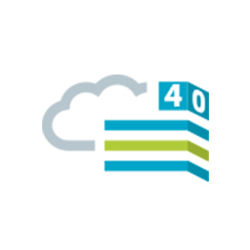Study Resource efficiency
Duration: Completed | 2017
If you have any questions about this completed project please contact our institute management:
Oberingenieure@PTW.TU-Darmstadt.de

The study “Resource Efficiency through Industry 4.0 – Potentials for Small and Medium-sized Enterprises (SMEs) in the Manufacturing Sector” examines the implementation of digitalisation measures with regard to resource efficiency.
The digital transformation in the development and manufacture of products, also known as Industry 4.0, is increasingly becoming a key challenge for manufacturing companies in Germany. Successfully shaping this fourth industrial revolution is one of the most important prerequisites for maintaining Germany's competitiveness as an industrial location. The second major challenge is the necessary decoupling of economic growth from resource consumption, which can only be achieved through the increasingly efficient use of natural resources in companies. The optimal design of the interaction between digital transformation and resource efficiency, as well as the consistent use of the resulting potential for reducing the consumption of materials and energy, are therefore of crucial importance.
In 2014, the cost of materials was by far the largest cost block in the manufacturing sector, representing around 43 % [1]. In contrast, the costs for personnel were just under 19 % and those for energy 1.9 % [2]. Although energy costs account for a significantly smaller share of gross value added than material costs, they are not negligible. This is because in Germany, 29 % (2,514 PJ) of total final energy was used in manufacturing in 2014.[3]
1] Manufacturing: “includes the mechanical, physical or chemical transformation of materials or parts into goods. It includes raw or basic materials from agriculture, forestry, fishing and fish farming, mining, quarrying and products of this section itself. The substantial modification or redesign of goods is generally regarded as the manufacture of goods and is assigned to manufacturing.” (Federal Statistical Office (2008), p. 186).
[2] Cf. Federal Statistical Office (2016a).
[3] Cf. Federal Statistical Office (2016b).






